What'sNEW October - December 2014
| 22 Dec 2014 |
What'sNEW about HGT  | | |
By mining ERVs from 65 host genomes sampled across vertebrate diversity, we uncover a great diversity of ERVs, indicating that retroviral sequences are much more prevalent and widespread across vertebrates than previously appreciated. ...We show that no major vertebrate lineage has escaped retroviral activity and that retroviruses are extreme host generalists, having an unprecedented ability for rampant host switching among distantly related vertebrates.
 Alexander Hayward, Charlie K. Cornwallis, and Patric Jern, "Pan-vertebrate comparative genomics unmasks retrovirus macroevolution" [Open Access abstract], doi:10.1073/pnas.1414980112, p 464-469 v 112, Proc. Nat. Acad. Sci USA, 13 Jan 2015. Alexander Hayward, Charlie K. Cornwallis, and Patric Jern, "Pan-vertebrate comparative genomics unmasks retrovirus macroevolution" [Open Access abstract], doi:10.1073/pnas.1414980112, p 464-469 v 112, Proc. Nat. Acad. Sci USA, 13 Jan 2015.
 Viruses and Other Gene Transfer Mechanisms is the main related CA webpage. Viruses and Other Gene Transfer Mechanisms is the main related CA webpage.
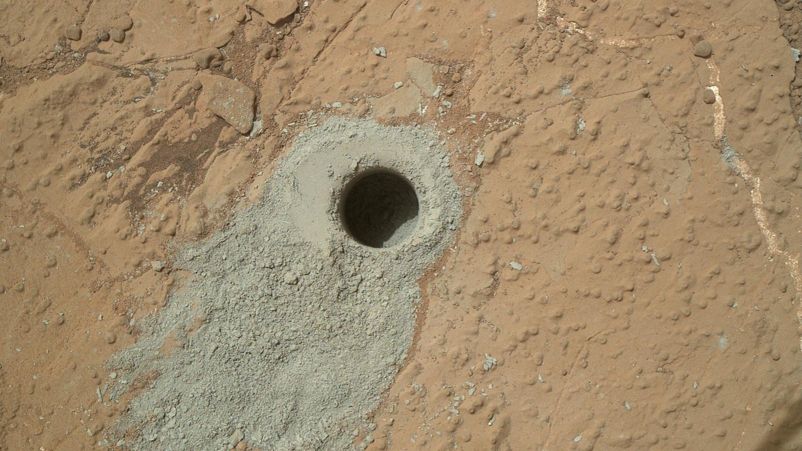
"NASA's Mars rover Curiosity drilled into this rock ...and collected a powdered sample." diameter: c. 0.6 inch or 1.6 cm, depth: c. 2.6 inches or 6.6 cm. |
Molecules found by Curiosity on Mars have been confirmed as organic matter. This is a reversal of the finding from the Viking Mission in 1976-77, when no organics were detected. That lack was deemed to overrule the positive results from the accompanying life-detection experiments at both Viking landing sites. But now, organics on Mars have been confirmed. No reason to doubt Viking's detection of life now, right?
 NASA Rover Finds Active and Ancient Organic Chemistry on Mars, NASA/JPL, 16 Dec 2014. NASA Rover Finds Active and Ancient Organic Chemistry on Mars, NASA/JPL, 16 Dec 2014.
 Curiosity has discovered organic matter on Mars by Michelle Starr, Cnet, 17 Dec 2014. Curiosity has discovered organic matter on Mars by Michelle Starr, Cnet, 17 Dec 2014.
 Life on Mars! has more about the Viking life-detection experiment. Life on Mars! has more about the Viking life-detection experiment.
 Thanks, Jim Christain. Thanks, Jim Christain.
The robot sees very low-level amounts constantly in the background, but it also has monitored a number of short-lived spikes that are 10 times higher. Methane on the Red Planet is intriguing because here on Earth, 95% of the gas comes from microbial organisms.
 Curiosity rover detects Martian methane burps by Lisa Grossman, NewScientist, 18:30, 16 Dec 2014. Curiosity rover detects Martian methane burps by Lisa Grossman, NewScientist, 18:30, 16 Dec 2014.
 Life on Mars? Curiosity Rover's Readings Revive Methane Mystery by Alan Boyle, NBC News, 16 Dec 2014. Life on Mars? Curiosity Rover's Readings Revive Methane Mystery by Alan Boyle, NBC News, 16 Dec 2014.
 Methane 'belches' detected on Mars by Jonathan Amos, BBC News, San Francisco, 16 Dec 2014. Methane 'belches' detected on Mars by Jonathan Amos, BBC News, San Francisco, 16 Dec 2014.
 Life on Mars! is the main related CA webpage. Life on Mars! is the main related CA webpage.
 Thanks, NPR, Ted Rigley and Jack Foster III. Thanks, NPR, Ted Rigley and Jack Foster III.
Images and data from comet-rendezvous missions reveal features consistent with cometary panspermia, according to two papers by Max Wallis and Chandra Wickramasinghe of the Buckingham Centre for Astrobiology. In one example, they analyze the parallel furrowed terrain in the neck of comet 67P, shown in this photo from ESA's Rosetta mission:

"Fig.6 shows striking terrain to the right of a largely smooth area, with rocky terrain on both sides. The dark furrows are aligned rather close (20 deg) to the solar direction and appear metres-deep, so may penetrate the protective crust into underlying ice. Their position on the 'neck' suggests that the system of cracks and furrows above them are generated by flexing of the two lobes as the comet rotates. They are reminiscent of cracks on Europa, generated by tidal flexing of that icy satellite which provides energy for ice cracking, creep and convection. Though comet 67P lacks Europa's internal ocean..., the furrows would still be sites for active outgassing and jet emissions from subsurface liquid domains in the manner discussed in our companion paper 2.... Their higher sublimation rates make them advantageous habitats for ice-living microbes, including algae, cyanobacteria and many other gram-positive bacteria thathave lipoteichoic acid in their cell walls to induce localized melting of the water-ice whenever the temperature exceeds 230K...." |
 Max Wallis and N. Chandra Wickramasinghe, "Rosetta images of Comet 67P/Churyumov-Gerasimenko 1: Near-surface icy terrain similar to comet Tempel-1," p 12297-12304 v 24, Journal of Cosmlogy, online 4 Dec 2014. Max Wallis and N. Chandra Wickramasinghe, "Rosetta images of Comet 67P/Churyumov-Gerasimenko 1: Near-surface icy terrain similar to comet Tempel-1," p 12297-12304 v 24, Journal of Cosmlogy, online 4 Dec 2014.
 N. Chandra Wickramasinghe and Max Wallis, "Rosetta images of Comet 67P/Churyumov-Gerasimenko 2: Prospects for establishing cometary biology," p 12305-12313 v 24, Journal of Cosmlogy, online 4 Dec 2014. N. Chandra Wickramasinghe and Max Wallis, "Rosetta images of Comet 67P/Churyumov-Gerasimenko 2: Prospects for establishing cometary biology," p 12305-12313 v 24, Journal of Cosmlogy, online 4 Dec 2014.
 Professor Chandra Wickramasinghe offers guidance to those "seeking of the signs of life" by William E. Smith, 8 Dec 2014. Professor Chandra Wickramasinghe offers guidance to those "seeking of the signs of life" by William E. Smith, 8 Dec 2014.
 Comets: The Delivery System is a related local webpage. Comets: The Delivery System is a related local webpage.
 Comet Rendezvous is a related section of the webpage, "Can The Theory Be Tested?". Comet Rendezvous is a related section of the webpage, "Can The Theory Be Tested?".
The Tissint meteorite contains organic carbon that may be evidence for past life on Mars. It was seen as it fell in Morocco on 18 Jul 2011. Since October 2011, fragments ranging from a gram to almost a kilogram have been recovered. An international team has now observed that isotope ratios of the carbon are most easily explained by life.
 Lin, Y., El Goresy, A., Hu, S., Zhang, J., Gillet, P., Xu, Y., Hao, J., Miyahara, M., Ouyang, Z., Ohtani, E., Xu, L., Yang, W., Feng, L., Zhao, X., Yang, J. and Ozawa, S., "NanoSIMS analysis of organic carbon from the Tissint Martian meteorite: Evidence for the past existence of subsurface organic-bearing fluids on Mars" [abstract], doi:10.1111/maps.12389, p 2201-2218 v 49, Meteoritics & Planetary Science, Dec 2014. Lin, Y., El Goresy, A., Hu, S., Zhang, J., Gillet, P., Xu, Y., Hao, J., Miyahara, M., Ouyang, Z., Ohtani, E., Xu, L., Yang, W., Feng, L., Zhao, X., Yang, J. and Ozawa, S., "NanoSIMS analysis of organic carbon from the Tissint Martian meteorite: Evidence for the past existence of subsurface organic-bearing fluids on Mars" [abstract], doi:10.1111/maps.12389, p 2201-2218 v 49, Meteoritics & Planetary Science, Dec 2014.
 Traces Of Carbon In Mars Meteorite Stir Debate About Life On Red Planet by Jacqueline Howard, The Huffington Post, 3 Dec 2014. Traces Of Carbon In Mars Meteorite Stir Debate About Life On Red Planet by Jacqueline Howard, The Huffington Post, 3 Dec 2014.
 Tissint meteorite shows signs of past biological activity on Mars - the cartoon: YouTube video, posted 2 Dec 2014. Tissint meteorite shows signs of past biological activity on Mars - the cartoon: YouTube video, posted 2 Dec 2014.
 Life on Mars! is the main related CA webpage. Life on Mars! is the main related CA webpage.
 Thanks, Gabriel Manzotti, Jerry Chancellor, Sascha Wageringel and Theodore Rigley. Thanks, Gabriel Manzotti, Jerry Chancellor, Sascha Wageringel and Theodore Rigley.
| 1 Dec 2014 |
What'sNEW about HGT  | | |
Here we show that tae genes have been transferred to eukaryotes on at least six occasions, and that the resulting domesticated amidase effector (dae) genes have been preserved for hundreds of millions of years through purifying selection. ...We speculate that the selective pressure imposed by competition between bacteria has produced a reservoir of genes encoding diverse antimicrobial functions that are tailored for co-option by eukaryotic innate immune systems.
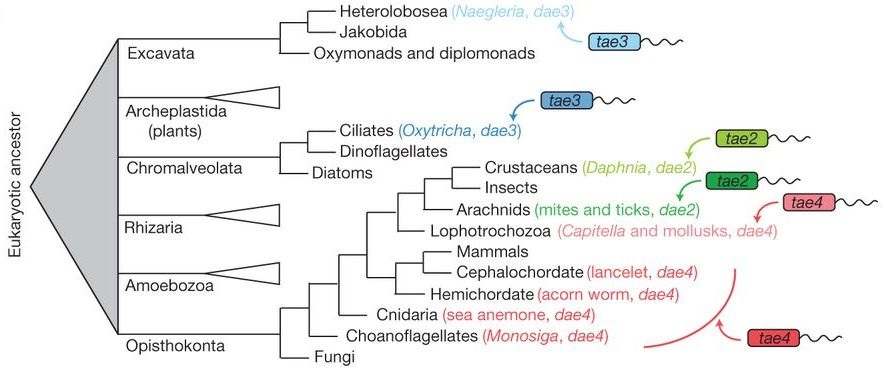
 Seemay Chou, Matthew D. Daugherty et al., "Transferred interbacterial antagonism genes augment eukaryotic innate immune function" [abstract], doi:10.1038/nature13965, Nature, online 24 Nov 2014. The 77 references include: Seemay Chou, Matthew D. Daugherty et al., "Transferred interbacterial antagonism genes augment eukaryotic innate immune function" [abstract], doi:10.1038/nature13965, Nature, online 24 Nov 2014. The 77 references include:
 Luis Boto, "Horizontal gene transfer in the acquisition of novel traits by metazoans" [html], doi:10.1098/rspb.2013.2450, n 20132450 v 281, Proc. R. Soc. B, Feb 2014. Luis Boto, "Horizontal gene transfer in the acquisition of novel traits by metazoans" [html], doi:10.1098/rspb.2013.2450, n 20132450 v 281, Proc. R. Soc. B, Feb 2014.
 Julie C. Dunning Hotopp, "Horizontal gene transfer between bacteria and animals" [abstract], doi:10.1016/j.tig.2011.01.005, p 157-163 v 27, Trends Genet., Apr 2011. Julie C. Dunning Hotopp, "Horizontal gene transfer between bacteria and animals" [abstract], doi:10.1016/j.tig.2011.01.005, p 157-163 v 27, Trends Genet., Apr 2011.
 Animals Steal Toxins with Gene Transfer to Fight Bacteria by Catherine Griffin, Science World Report, accessed 26 Nov 2014. Animals Steal Toxins with Gene Transfer to Fight Bacteria by Catherine Griffin, Science World Report, accessed 26 Nov 2014.
 Raiding the Oldest Arsenal by Ed Yong, National Geographic, 25 Nov 2014. Raiding the Oldest Arsenal by Ed Yong, National Geographic, 25 Nov 2014.
 Viruses and Other Gene Transfer Mechanisms is the main related CA webpage. Viruses and Other Gene Transfer Mechanisms is the main related CA webpage.
 Thanks, Google Alerts and Lyle Moss. Thanks, Google Alerts and Lyle Moss.
This study provides experimental evidence that the DNA's genetic information is essentially capable of surviving the extreme conditions of space and the re-entry into Earth's dense atmosphere. ...We were completely surprised.... Professor Oliver Ullrich
 Thiel CS, Tauber S, Schütte A, Schmitz B, Nuesse H, et al., "Functional Activity of Plasmid DNA after Entry into the Atmosphere of Earth Investigated by a New Biomarker Stability Assay for Ballistic Spaceflight Experiments" [html], doi:10.1371/journal.pone.0112979, 9(11): e112979, PLoS ONE, 26 Nov 2014. Thiel CS, Tauber S, Schütte A, Schmitz B, Nuesse H, et al., "Functional Activity of Plasmid DNA after Entry into the Atmosphere of Earth Investigated by a New Biomarker Stability Assay for Ballistic Spaceflight Experiments" [html], doi:10.1371/journal.pone.0112979, 9(11): e112979, PLoS ONE, 26 Nov 2014.
 DNA survives critical entry into Earth's atmosphere, University of Zurich (+The Telegraph +ScienceDaily +Astrobiology Web), 26 Nov 2014. DNA survives critical entry into Earth's atmosphere, University of Zurich (+The Telegraph +ScienceDaily +Astrobiology Web), 26 Nov 2014.
 Thanks, Jeff Krolick, William Smith, Chandra Wickramasinghe, Google Alerts, Jocob Navia, Walter Klyce and Stan Franklin. Thanks, Jeff Krolick, William Smith, Chandra Wickramasinghe, Google Alerts, Jocob Navia, Walter Klyce and Stan Franklin.
NASA has repeatedly stated that Curiosity carries no life-detection capability. This seems a very curious omission....
 Gilbert V. Levin, "The Curiousness of Curiosity" [html], doi:10.1089/ast.2014.1406, Astrobiology, online 25 Nov 2014. Gilbert V. Levin, "The Curiousness of Curiosity" [html], doi:10.1089/ast.2014.1406, Astrobiology, online 25 Nov 2014.
 Gilbert V. Levin, "Stealth life detection instruments aboard Curiosity" [abstract], Proc. SPIE 8521, Instruments, Methods, and Missions for Astrobiology XV, 852102, 15 Oct 2012. Gilbert V. Levin, "Stealth life detection instruments aboard Curiosity" [abstract], Proc. SPIE 8521, Instruments, Methods, and Missions for Astrobiology XV, 852102, 15 Oct 2012.
 Did NASA's Opportunity rover find evidence for life on Mars in 2004?, What'sNEW, 26 Jul 2013. Did NASA's Opportunity rover find evidence for life on Mars in 2004?, What'sNEW, 26 Jul 2013.
 Life on Mars! is the main related CA webpage. Life on Mars! is the main related CA webpage.
 Thanks, William Smith. Thanks, William Smith.
 Russian scientists suggest hypothesis that meteorites might have brought life to Earth, TASS Russian News Agency, 19 Nov 2014. Russian scientists suggest hypothesis that meteorites might have brought life to Earth, TASS Russian News Agency, 19 Nov 2014.
 ...Experiment confirms meteorite may have brought life to Earth, RT News, 19 Nov 2014. ...Experiment confirms meteorite may have brought life to Earth, RT News, 19 Nov 2014.
 Russian Orthodox Priests Admits Comet Could've Created Life on Earth by Alexey Eremenko, The Moscow Times, 21 Nov 2014. Russian Orthodox Priests Admits Comet Could've Created Life on Earth by Alexey Eremenko, The Moscow Times, 21 Nov 2014.
 Thanks for alerts, Thanks for alerts,  Bill Smith, Chandra Wickramasinghe, Gabriel Manzotti and Google Alerts. Bill Smith, Chandra Wickramasinghe, Gabriel Manzotti and Google Alerts.
| 19 Nov 2014 |
What'sNEW about HGT  | | |
We can find no extant organism that displays the gradual acquisition of the various components of the adaptive immune system. The complex coordinated regulation, along with complex coordinated dense gene sets involved do not exist outside of the jawed vertebrates. Yet, examples of most of these coordinated processes and genes can be found in viruses of various prokaryotes and eukaryotes. ...I have argued vigorously ...that viruses originate these coordinated and dense gene sets associated with antiviral responses and have provided them to the host via colonization (a big bang like horizontal transfer).

 Luis P. Villarreal, "Viral Ancestors of Antiviral Systems" [Open Access link], doi:10.3390/v3101933, p 1933-1958 v 3, Viruses, 20 Oct 2011. Luis P. Villarreal, "Viral Ancestors of Antiviral Systems" [Open Access link], doi:10.3390/v3101933, p 1933-1958 v 3, Viruses, 20 Oct 2011.
 Viruses are essential agents within the roots and stem of the tree of life by Luis P. Villarreal and Guenther Witzany, doi:10.1016/j.jtbi.2009.10.014, Journal of Theoretical Biology, 21 Feb 2010. Viruses are essential agents within the roots and stem of the tree of life by Luis P. Villarreal and Guenther Witzany, doi:10.1016/j.jtbi.2009.10.014, Journal of Theoretical Biology, 21 Feb 2010.
 LP Villarreal, "Force for ancient and recent life: viral and stem-loop RNA consortia promote life" [abstract], doi:10.1111/nyas.12565, Ann NY Acad Sci, online 6 Nov 2014. LP Villarreal, "Force for ancient and recent life: viral and stem-loop RNA consortia promote life" [abstract], doi:10.1111/nyas.12565, Ann NY Acad Sci, online 6 Nov 2014.
 2000 2000
 2006 2006
 2006 2006
 2015: more from Villarreal. 2015: more from Villarreal.
 Viruses and Other Gene Transfer Mechanisms is the main related CA webpage. Viruses and Other Gene Transfer Mechanisms is the main related CA webpage.
 Comet team detects organic molecules, basis of life... by Victoria Bryan, Reuters via Yahoo News, 18 Nov 2014. Comet team detects organic molecules, basis of life... by Victoria Bryan, Reuters via Yahoo News, 18 Nov 2014.
 Comet landing: Organic molecules detected by Philae by Paul Rincon, BBC News, 18 Nov 2014. Comet landing: Organic molecules detected by Philae by Paul Rincon, BBC News, 18 Nov 2014.
 Comet Lander Finds Organic Matter by Kerry Grens, The Scientist, 19 Nov 2014. Comet Lander Finds Organic Matter by Kerry Grens, The Scientist, 19 Nov 2014.
 Thanks for alerts, Jack Foster III, Ronnie McGhee and Jim McGee. Thanks for alerts, Jack Foster III, Ronnie McGhee and Jim McGee.
 Rosetta Images Show Philae Lander Bouncing Across Comet by Alan Boyle, NBC News, 17 Nov 2014. Rosetta Images Show Philae Lander Bouncing Across Comet by Alan Boyle, NBC News, 17 Nov 2014.
With its batteries depleted and not enough sunlight available to recharge, Philae has fallen into 'idle mode' for a potentially long silence.
 Our lander's asleep, Rosetta Blog, c. 1:30 GMT, 15 Nov 2014. Our lander's asleep, Rosetta Blog, c. 1:30 GMT, 15 Nov 2014.

 Rosetta's missing Philae lander is frantically doing improvised science, even as its batteries die, The Washington Post, 9:19 AM EST, 14 Nov 2014. Rosetta's missing Philae lander is frantically doing improvised science, even as its batteries die, The Washington Post, 9:19 AM EST, 14 Nov 2014.
 Philae still talking!, Rosetta Blog, 15 Nov 2014. Philae still talking!, Rosetta Blog, 15 Nov 2014.
 ...Philae tight landing spot on comet prompts tough decisions for Esa, The Guardian, 13 Nov 2014. ...Philae tight landing spot on comet prompts tough decisions for Esa, The Guardian, 13 Nov 2014.
The instruments are running and are delivering images and data.
 Philae, The 'Happy Lander', JPL, NASA, 13 Nov 2014. Philae, The 'Happy Lander', JPL, NASA, 13 Nov 2014.
 Comet probe's solar panels caught in cliff's shadow by Doug Stanglin and Traci Watson, USA Today, 13 Nov 2014. Comet probe's solar panels caught in cliff's shadow by Doug Stanglin and Traci Watson, USA Today, 13 Nov 2014.
13:15 CST: Philae landed on target, and may have gently bounced and turned. The anchoring harpoons did not attach. Radio links initially working.
 ...Philae craft may have bounced during comet landing..., The Guardian, 12 Nov 2014. ...Philae craft may have bounced during comet landing..., The Guardian, 12 Nov 2014.
 ...Philae comet probe may have bounced after harpoon failure by Dave Gilbert, CNN.com, 15:29 EST, 12 Nov 2014. ...Philae comet probe may have bounced after harpoon failure by Dave Gilbert, CNN.com, 15:29 EST, 12 Nov 2014.
Philae lands on the surface of comet 67P/Churyumov-Gerasimenko at 16:03 GMT.
 Live Updates, Rosetta Mission Comet Landing, ESA. Live Updates, Rosetta Mission Comet Landing, ESA.
Rosetta will release its washing-machine-sized Philae lander for a 7-hour descent to the surface of comet 67P/Churyumov-Gerasimenko on tomorrow, 12 November. The European Space Agency (ESA) launched this comet rendezvous mission in March, 2004.
 Landing on a comet: A guide to Rosetta's perilous mission by Elizabeth Gibney, Nature News, 10 Nov 2014. Landing on a comet: A guide to Rosetta's perilous mission by Elizabeth Gibney, Nature News, 10 Nov 2014.
 Comet Rendezvous is a related section of the webpage, "Can The Theory Be Tested?". Comet Rendezvous is a related section of the webpage, "Can The Theory Be Tested?".
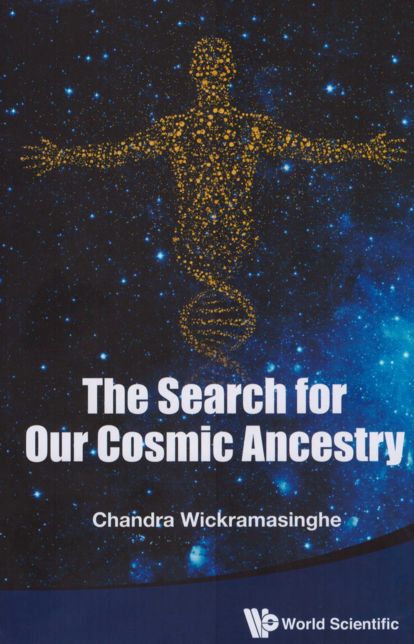
 Chandra Wickramasinghe, The Search for Our Cosmic Ancestry, ISBN: 978-981-4616-96-6, World Scientific, Dec 2014. Chandra Wickramasinghe, The Search for Our Cosmic Ancestry, ISBN: 978-981-4616-96-6, World Scientific, Dec 2014.
 The Discovery of Extraterrestrial Life, 90-min. public lecture by Chandra Wickramasinghe at the University of Huddersfield, 28 Sep 2013. The Discovery of Extraterrestrial Life, 90-min. public lecture by Chandra Wickramasinghe at the University of Huddersfield, 28 Sep 2013.
 Thanks for posting the lecture, Anthony Beckett, Exopolitics Great Britain. Thanks for posting the lecture, Anthony Beckett, Exopolitics Great Britain.
 Chandra Wickramasinghe... has an essay and related links. Chandra Wickramasinghe... has an essay and related links.
| 25 Oct 2014 |
What'sNEW about HGT  | |
|
Horizontal gene transfer is widely recognized as a powerful force shaping evolution within bacterial populations but as more genomes are sequenced, it becomes increasingly apparent that its effects are not limited to microbes — David Baltrus, the University of Arizona

 How An Antibiotic Gene Jumped All Over The Tree of Life by Ed Yong, National Geographic, 24 Oct 2014. How An Antibiotic Gene Jumped All Over The Tree of Life by Ed Yong, National Geographic, 24 Oct 2014.
 Life's extremists may be an untapped source of antibacterial drugs by David Salisbury, Vanderbilt University, 21 Nov 2014. Life's extremists may be an untapped source of antibacterial drugs by David Salisbury, Vanderbilt University, 21 Nov 2014.
 Jason A Metcalf et al., "Antibacterial gene transfer across the tree of life" [html], doi:10.7554/eLife.04266, 3:e04266, eLife, 25 Nov 2014. Jason A Metcalf et al., "Antibacterial gene transfer across the tree of life" [html], doi:10.7554/eLife.04266, 3:e04266, eLife, 25 Nov 2014.
 Viruses and Other Gene Transfer Mechanisms is the main related CA webpage. Viruses and Other Gene Transfer Mechanisms is the main related CA webpage.
 The Tree of Life is a related local webpage. The Tree of Life is a related local webpage.
 Thanks, Google Alerts. Thanks, Google Alerts.
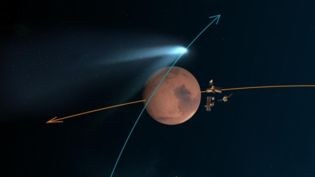 Comet Siding Spring will pass close to Mars on Sunday, 19 October. It is a long-period comet, coming from the Oort cloud, well beyond the orbits of Neptune and Pluto. By good fortune, NASA's Mars-orbiter MAVEN just arrived at Mars, intended to study its upper atmosphere. Its instruments should be able, from close range, to analyze the coma of the visiting comet. ESA's Mars Express, also in Mars orbit, will have a chance to look, too. If a comet from beyond the planets brings with it any clear signs of life, we will be thrilled.
Comet Siding Spring will pass close to Mars on Sunday, 19 October. It is a long-period comet, coming from the Oort cloud, well beyond the orbits of Neptune and Pluto. By good fortune, NASA's Mars-orbiter MAVEN just arrived at Mars, intended to study its upper atmosphere. Its instruments should be able, from close range, to analyze the coma of the visiting comet. ESA's Mars Express, also in Mars orbit, will have a chance to look, too. If a comet from beyond the planets brings with it any clear signs of life, we will be thrilled.
 Mars MAVEN Mission turns its powerful instruments towards Comet Siding Spring this weekend, by Chandra Wickramasinghe, 15 Oct 2014. Mars MAVEN Mission turns its powerful instruments towards Comet Siding Spring this weekend, by Chandra Wickramasinghe, 15 Oct 2014.
 Comet Siding Spring to Skim Past Mars in Once in a Million Years Encounter This Weekend, by Alyssa Newcomb, ABC News, 17 Oct 2014. Comet Siding Spring to Skim Past Mars in Once in a Million Years Encounter This Weekend, by Alyssa Newcomb, ABC News, 17 Oct 2014.
 Colliding Atmospheres: Mars vs Comet Siding Spring, by Dr. Tony Phillips, NASA Science News, 12 Aug 2014. Colliding Atmospheres: Mars vs Comet Siding Spring, by Dr. Tony Phillips, NASA Science News, 12 Aug 2014.
 Mars Express ready for comet encounter, ESA, 17 Oct 2014. Mars Express ready for comet encounter, ESA, 17 Oct 2014.
 Chandra Wickramasinghe and William E. Smith, "MAVEN turns to COMET Siding Spring" [pdf], Journal of Cosmology, 14 Oct 2014. Chandra Wickramasinghe and William E. Smith, "MAVEN turns to COMET Siding Spring" [pdf], Journal of Cosmology, 14 Oct 2014.
 Comet Rendezvous is a related section of the webpage "Can The Theory Be Tested?" Comet Rendezvous is a related section of the webpage "Can The Theory Be Tested?"
 Thanks, Bill Smith. Thanks, Bill Smith.
| 16 Oct 2014 |
What'sNEW about HGT  | | |
Gene transfers identified at major evolutionary transitions among prokaryotes specifically implicate gene acquisitions for metabolic functions from bacteria as key innovations in the origin of higher archaeal taxa. ...Gene transfers from bacteria to archaea not only underpin the origin of major archaeal groups, they also underpin the origin of eukaryotes, because the host that acquired the mitochondrion was, phylogenetically, an archaeon. — Nelson-Sathi et al., Nature, 2014
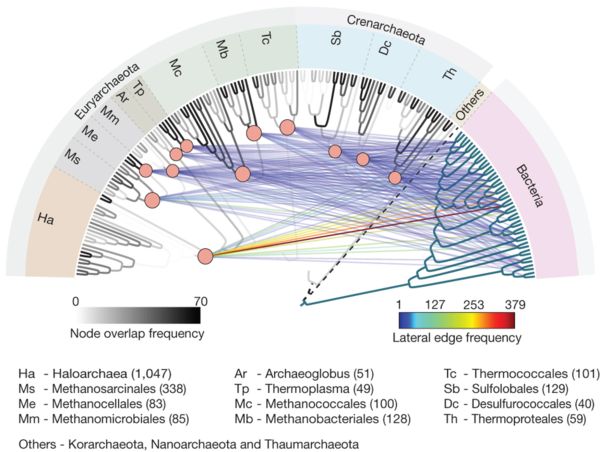 | |
Lateral edges indicate 2,264 bacterial acquisitions in archaea. The number of acquisitions per group is indicated in parentheses, the number of times the bacterial taxon appeared within the inferred donor clade is colour coded (scale bar at right). |
A paradigm shift for prokaryotic evolution seems to have arrived: new genetic programs are not invented by point mutations. Many are installed by HGT. For eukaryotes as well — in addition to the prokaryotic genes that came with mitichondria and chloroplasts — there are countless examples of genetic programs acquired by various means of HGT. (If any were composed by the strictly darwinian method, the evidence therefor is unconvincing.)
 Shijulal Nelson-Sathi et al., "Origins of major archaeal clades correspond to gene acquisitions from bacteria" [html], doi:10.1038/nature13805, p 77-80 v 517, Nature, 1 Jan 2015 (online 15 Oct 2014.) Shijulal Nelson-Sathi et al., "Origins of major archaeal clades correspond to gene acquisitions from bacteria" [html], doi:10.1038/nature13805, p 77-80 v 517, Nature, 1 Jan 2015 (online 15 Oct 2014.)
 New Genes = New Archaea? by Molly Sharlach, The Scientist, 15 Oct 2014. New Genes = New Archaea? by Molly Sharlach, The Scientist, 15 Oct 2014.
 Thanks, Google Alerts. Thanks, Google Alerts.
 Gene stealing was the way to go for life on early earth by Dick Ahlstrom, The Irish Times, 16 Oct 2014. Gene stealing was the way to go for life on early earth by Dick Ahlstrom, The Irish Times, 16 Oct 2014.
 ...Genetic breakthrough on evolution, Maynooth University (+Asian Correspondent), 17 Oct 2014. ...Genetic breakthrough on evolution, Maynooth University (+Asian Correspondent), 17 Oct 2014.
 Viruses and Other Gene Transfer Mechanisms is the main related CA webpage. Viruses and Other Gene Transfer Mechanisms is the main related CA webpage.
Does evolutionary theory need a rethink? This interrogatory headline in Nature introduces two opposing opinions, each co-authored by prominent biologists. The articles are available online, with plenty of reader comments. We are mildly curious.
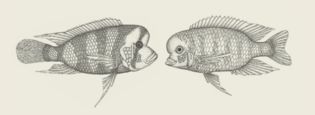 The "Yes, urgently" authors want to supplant standard evolutionary theory (SET) with an extended evolutionary synthesis (EES) that features their topics of interest: In our view, this 'gene-centric' focus fails to capture the full gamut of processes that direct evolution. Missing pieces include how physical development influences the generation of variation (developmental bias); how the environment directly shapes organisms' traits (plasticity); how organisms modify environments (niche construction); and how organisms transmit more than genes across generations (extra-genetic inheritance).
The "Yes, urgently" authors want to supplant standard evolutionary theory (SET) with an extended evolutionary synthesis (EES) that features their topics of interest: In our view, this 'gene-centric' focus fails to capture the full gamut of processes that direct evolution. Missing pieces include how physical development influences the generation of variation (developmental bias); how the environment directly shapes organisms' traits (plasticity); how organisms modify environments (niche construction); and how organisms transmit more than genes across generations (extra-genetic inheritance).
The "No, all is well" writers counter, The evolutionary phenomena championed by Laland and colleagues are already well integrated into evolutionary biology, where they have long provided useful insights.
We have read the two articles closely. Both sides discuss adaptation, speciation, modification and variation at length. And neither mentions innovation nor sustainable evolutionary progress — the most interesting and challenging aspects of evolution. Somehow, the general public has come to believe that these latter phenomena are also well-explained by mainstream science. They aren't.
Evolutionary progress on Earth is characterized by a long series of innovations, each of which requires new genetic programming. Where new genetic programming comes from is the big unanswered question. Nether side in this debate has anything to say about it. To us, the controversy looks like a tempest in a teapot.
 "Does evolutionary theory need a rethink?" ("Yes, urgently" by Kevin Laland et al.; "No, all is well" by Gregory A. Wray, Hopi E. Hoekstra et al.) [html], doi:10.1038/514161a, p 161-164 v 514, Nature, 9 Oct 2014. "Does evolutionary theory need a rethink?" ("Yes, urgently" by Kevin Laland et al.; "No, all is well" by Gregory A. Wray, Hopi E. Hoekstra et al.) [html], doi:10.1038/514161a, p 161-164 v 514, Nature, 9 Oct 2014.
 Neo-Darwinism: The Current Paradigm is a related local webpage. Neo-Darwinism: The Current Paradigm is a related local webpage.
 Thanks for alerts and comments, Stan Franklin and Bob Sweeney. Thanks for alerts and comments, Stan Franklin and Bob Sweeney.
Limited evidence indicates that there may be more pervasive de novo gene
origination than currently appreciated.
 YE Zhang, M Long, "New genes contribute to genetic and phenotypic novelties in human evolution"
[abstract | pdf], doi:10.1016/j.gde.2014.08.013, p 90-96 v 29, Current Opinion in Genetics & Development, Dec 2014. YE Zhang, M Long, "New genes contribute to genetic and phenotypic novelties in human evolution"
[abstract | pdf], doi:10.1016/j.gde.2014.08.013, p 90-96 v 29, Current Opinion in Genetics & Development, Dec 2014. |
24 hominoid-specific de novo protein-coding genes were identified: eleven encode proteins only in human and thirteen encode proteins in both human and chimpanzee but not in rhesus macaque. These were the subject of a study by an interdisciplinary team from Peking University and the Chinese Academy of Sciences.
De novo genes are genes that come from pre-existing DNA sequences that were not previously translated. In this study, a human-specific de novo gene was defined as a gene without intact orthologous ORF in multiple out-group species including chimpanzee, orangutan, rhesus macaque, mouse, dog and so on. The details of the process whereby they become translated genes is just nowadays being worked out, but the importance of de novo genes for evolutionary advances is well-documented.

These 24 were selected in a comparative transcriptome study. In rhesus macaque or chimpanzee, the untranslated orthologs are transcribed as polyadenylated non-coding RNAs. They are smaller than average human genes, with a median translated length of 150.5 amino-acids, compared with 416 a-as in the human genome. Alu elements contributed to eight exons ...and to three splicing junction sites..., further supporting the previous observation that repeat elements might be involved in the origination of some de novo genes.
Even a human-specific protein of only 150 amino acids, encoded by previously untranslated DNA, is something to wonder about. How did it acquire its programming? The chance that some or all of the DNA sequence was already transcribed for non-coding RNA would not explain the protein that it encodes. That protein appeared without having undergone natural selection, so the phenomenon is confounding for darwinism. But the phenomenon is consistent with cosmic ancestry, in which genetic programming comes first.
 Chen Xie, Yong E. Zhang, Jia-Yu Chen, et al., "Hominoid-Specific De Novo Protein-Coding Genes Originating from Long Non-Coding RNAs"
[html], doi:10.1371/journal.pgen.1002942, PLoS Genetics, 13 Sep 2012. Chen Xie, Yong E. Zhang, Jia-Yu Chen, et al., "Hominoid-Specific De Novo Protein-Coding Genes Originating from Long Non-Coding RNAs"
[html], doi:10.1371/journal.pgen.1002942, PLoS Genetics, 13 Sep 2012.
 Conserved Non-Genic Sequences, Conserved Non-Genic Sequences,
 A Wordcount for Comparison, A Wordcount for Comparison,
 ...De Novo Genes and ...De Novo Genes and
 New genetic programs in Darwinism and strong panspermia are related CA webpages. New genetic programs in Darwinism and strong panspermia are related CA webpages.
 Thanks, Jack Foster III, for a kind notice on facebook. Thanks, Jack Foster III, for a kind notice on facebook.
...We here propose a Biological Complexity Index (BCI), designed to provide a quantitative estimate of the relative probability that complex, macro-organismic life forms could have emerged on other worlds.
 Irwin LN, Méndez A, Fairén AG, Schulze-Makuch D, "Assessing the Possibility of Biological Complexity on Other Worlds, with an Estimate of the Occurrence of Complex Life in the Milky Way Galaxy" [Open Access abstract], doi:10.3390/challe5010159, p 159-174 v 5, Challenges in Astrobiology, 28 May 2014. Irwin LN, Méndez A, Fairén AG, Schulze-Makuch D, "Assessing the Possibility of Biological Complexity on Other Worlds, with an Estimate of the Occurrence of Complex Life in the Milky Way Galaxy" [Open Access abstract], doi:10.3390/challe5010159, p 159-174 v 5, Challenges in Astrobiology, 28 May 2014.
 ...100 Million Worlds may have Complex Alien Life in our Galaxy, earthweareone.com (+Kinja.com), 29 Sep 2014. ...100 Million Worlds may have Complex Alien Life in our Galaxy, earthweareone.com (+Kinja.com), 29 Sep 2014.
 Life on Europa, Other Moons, Other Planets? has related links. Life on Europa, Other Moons, Other Planets? has related links.
 Thanks, Larry Klaes via facebook Thanks, Larry Klaes via facebook
![]()
|




 Comet Siding Spring will pass close to Mars on Sunday, 19 October. It is a long-period comet, coming from the Oort cloud, well beyond the orbits of Neptune and Pluto. By good fortune, NASA's Mars-orbiter MAVEN just arrived at Mars, intended to study its upper atmosphere. Its instruments should be able, from close range, to analyze the coma of the visiting comet. ESA's Mars Express, also in Mars orbit, will have a chance to look, too. If a comet from beyond the planets brings with it any clear signs of life, we will be thrilled.
Comet Siding Spring will pass close to Mars on Sunday, 19 October. It is a long-period comet, coming from the Oort cloud, well beyond the orbits of Neptune and Pluto. By good fortune, NASA's Mars-orbiter MAVEN just arrived at Mars, intended to study its upper atmosphere. Its instruments should be able, from close range, to analyze the coma of the visiting comet. ESA's Mars Express, also in Mars orbit, will have a chance to look, too. If a comet from beyond the planets brings with it any clear signs of life, we will be thrilled.



 The "Yes, urgently" authors want to supplant standard evolutionary theory (SET) with an extended evolutionary synthesis (EES) that features their topics of interest: In our view, this 'gene-centric' focus fails to capture the full gamut of processes that direct evolution. Missing pieces include how physical development influences the generation of variation (developmental bias); how the environment directly shapes organisms' traits (plasticity); how organisms modify environments (niche construction); and how organisms transmit more than genes across generations (extra-genetic inheritance).
The "Yes, urgently" authors want to supplant standard evolutionary theory (SET) with an extended evolutionary synthesis (EES) that features their topics of interest: In our view, this 'gene-centric' focus fails to capture the full gamut of processes that direct evolution. Missing pieces include how physical development influences the generation of variation (developmental bias); how the environment directly shapes organisms' traits (plasticity); how organisms modify environments (niche construction); and how organisms transmit more than genes across generations (extra-genetic inheritance).
